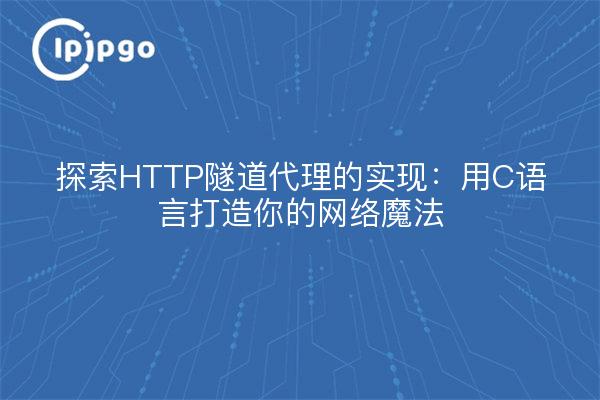
In the world of computer networks, the HTTP tunneling proxy is a powerful and mysterious tool. It allows data to travel through different network environments, like opening a hidden channel for data. The use of C language to implement HTTP tunneling proxy, but also for this network magic adds a few technical charm. Today, we will unveil the mystery of HTTP tunneling proxy to find out.
What is HTTP Tunneling Proxy?
HTTP Tunneling Proxy, as the name suggests, utilizes the HTTP protocol to tunnel data. It is able to encapsulate data from other protocols in HTTP requests, thereby bypassing network restrictions such as firewalls. Imagine this as digging an underground tunnel in a city, allowing vehicles to traverse busy streets without hindrance.
In some restricted network environments, HTTP tunneling proxies can be a master key that allows users to access restricted resources. It not only enhances the flexibility of the network, but also protects the user's privacy to a certain extent.
The Charm of C: Implementing an HTTP Tunneling Proxy
The HTTP tunneling proxy was chosen because of the efficiency and flexibility of C. C allows developers to have fine-grained control over the underlying network operations, which is essential for realizing high-performance network applications.
In the following, we will briefly introduce the basic steps to implement HTTP tunneling proxy in C:
1. Creating a Socket Connection: First of all, you need to create a Socket, used to communicate with the target server and the client.C language provides a rich Socket programming interface, can meet a variety of network programming needs.
2. Parsing HTTP requests: After receiving an HTTP request from a client, you need to parse the request header and extract information about the target server. This step is like unwrapping a courier package to see what's inside.
3. Forwarding data: Encapsulate the client's data in an HTTP request and forward it to the target server. Then, the server's response is returned to the client. This step involves handling the reading, writing, and forwarding of data, like a courier going back and forth between different recipients.
4. Handling errors and exceptions: In real network environments, various errors and exceptions are inevitable. Robust code needs to be written to handle these situations and ensure the stable operation of the agent.
Challenges and solutions in realization
In the process of implementing HTTP tunneling proxies, there are some challenges that can be encountered, such as efficient data transfer and connection stability. To deal with these challenges, we can take the following measures:
– Using multi-threaded or asynchronous I/O: To improve the concurrency and efficiency of data transfer. the C language provides support for multithreaded programming, which can be implemented using the POSIX threading library.
– Optimizing the data buffer: Reasonable design of data buffers to reduce the number of memory copies and improve data transfer speed.
– Detailed logging: Add detailed logging to your code to help quickly locate and resolve issues.
HTTP Tunneling Proxy Application Scenarios
HTTP Tunnel Proxy has a wide range of applications in many scenarios. For example, in corporate networks, it can help employees access external resources; in development testing, it can be used to simulate different network environments; and in privacy protection, it can hide users' real IP addresses.
Overall, the HTTP Tunneling Proxy is a powerful and flexible networking tool. Through the implementation of C language, we can feel both the technical challenges and experience the joy of success. I hope this article can stimulate your interest in the world of network programming and let you find your own share of fun.








